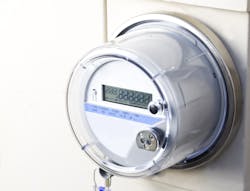Look 'Behind the Meter' First to De-Risk Demand Side Response Investment
Opportunities abound for energy-intensive small and medium-scale businesses in the emerging demand side response (DSR) market – but these firms should invest first in analyzing and optimizing their consumption – and generation –‘behind the meter.’ That, at least, is according to gridIMP, a specialist in machine-learning-based demand side response technology.
As the energy utilities, national grid and other energy market stakeholders begin to respond to government demands for increased energy market flexibility, there is, nevertheless a paucity of information for end users considering not only how to be more efficient in their energy use, but also how to effectively monetize their DSR adaptations.
Currently, the DSR market set-up tends to favor only the largest industrial firms who are able to work with the margin extracted by market aggregators or with the resources to manage a minimum 1MW response themselves.
Alongside the encouragement for further clarity in proposed market flexibility, gridIMP is therefore recommending that businesses considering investing in providing DSR services should take a holistic view of their energy needs over the long term. In practice, this should consist of four key steps:
1. Measure – Large and medium scale businesses should firstly invest in monitoring to understand their own energy needs in detail.
2. Manage – Once firms have an idea of their energy use, they should then start to look at how they create a solid foundation for energy management – such as reducing waste, identifying anomalous usage and adjusting.
3. Invest – Only when the first two initial steps have been enacted should firms look at measures such as supporting load shifting - to avoid non commodity cost and to maximize the benefit from variable tariffs
4. Learn through best practice – gridIMP recommends that business users should look to an initial soft entry to the DSR market with spare capacity by learning the opportunities locally with their DNO and in the broader market, and only then looking to invest to gain returns from flexibility services under the right conditions
The recommendations come in light of a number of initial moves by early adopters who invested in DSR technology only to experience high aggregator costs, price volatility and unused equipment, owing to unsuccessful bids into the market and overall market complexity.
But, by investing behind the meter for business resilience, protection from system trips or outages, load shifting in response to variable unit rates or increasing non-commodity costs, businesses can hedge the costs of committing to DSR while the market is still evolving, and have the confidence that as the market matures, they can effectively monetise their DSR capacity.
“While the demand side response market is rapidly evolving, there are still some pitfalls that are to be avoided for business looking to invest in the technology at this stage,” said Richard Ryan, Commercial Director, gridIMP.
“In the race to capitalize on the wider market, businesses must ensure that they start by investing ‘behind the meter’ first, hedging their investments against the current volatility for DSR pricing.”
“At present, there are a number of compelling offers for DSR aggregation, but as the sector grows and we see greater impact from technologies such as AI, then the shifts that will take place will likely overtake the current routes to market.”
Ed Ross, Technical Director, gridIMP commented: “The best steps that businesses can take in this climate is to first analyze their own usage – looking for quick wins from energy saving, before then considering onsite storage or generation, enabling participation in distributed energy resource for longer term returns.”
